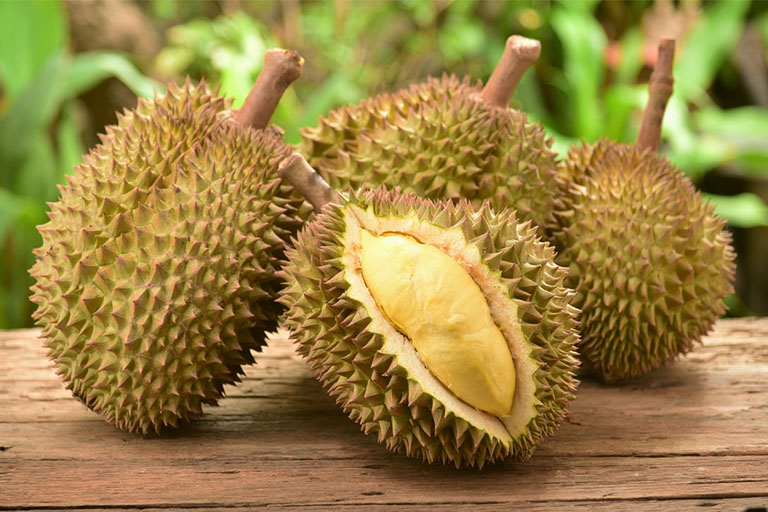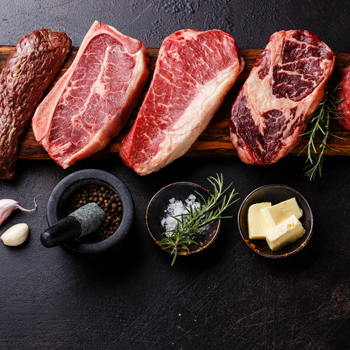
“Clean Label” Solutions for Meat Products
Eating Right for Two: Important Ingredients for Better Maternal Nutrition

ส่วนผสมสำคัญสำหรับโภชนาการที่ดีขึ้นสำหรับคุณแม่กำลังตั้งครรภ์ : การบริโภคที่เป็นประโยชน์ทั้งคุณแม่และลูกน้อย
โภชนาการที่ดีเป็นสิ่งสำคัญในทุกช่วงของชีวิต แต่ความต้องการสารอาหารที่เหมาะสมเป็นสิ่งสำคัญอย่างยิ่งสำหรับคุณแม่ที่กำลังตั้งครรภ์และวางแผนจะตั้งครรภ์เนื่องจากสิ่งที่คุณแม่รับประทานจะมีผลกระทบอย่างมากต่อชีวิตที่มีค่าทั้งสอง
คุณแม่ส่วนใหญ่ตระหนักดีถึงสารอาหารที่มีคุณค่าทางโภชนาการที่จำเป็นต่อการดูแลสุขภาพของตัวเองและลูกน้อยในครรภ์ เช่นโปรตีน คาร์โบไฮเดรต ไขมันที่จำเป็น แร่ธาตุและวิตามิน อย่างไรก็ตามคุณแม่ยังสามารถทำได้มากกว่านั้นเพื่อรักษาสุขภาพให้แข็งแรง ได้แก่การรักษาระดับน้ำตาลในเลือด การดูแลสุขภาพทางเดินอาหารด้วยการบริโภคอาหารที่มีเส้นใยอาหาร (Dietary Fibre) และการส่งเสริมการเจริญเติบโตของจุลินทรีย์ในลำไส้ที่เป็นประโยชน์ (Gut Microbe)
การเลือกส่วนผสมที่ชาญฉลาดเพื่อรักษาระดับน้ำตาลในเลือดให้สมดุล
ในประเทศสิงคโปร์พบว่าคุณแม่ตั้งครรภ์ประมาณหนึ่งในสี่ถึงห้าคนเป็นโรคเบาหวานขณะตั้งครรภ์1 (Gestational Diabetes Mellitus : GDM) GDM เป็นโรคเบาหวานที่ได้รับการวินิจฉัยครั้งแรกในช่วงไตรมาสที่สองถึงสามของการตั้งครรภ์ซึ่งชัดเจนว่าไม่เป็นอยู่ก่อนแล้ว จึงเป็นเรื่องน่ากังวลเนื่องจากระดับกลูโคสที่สูงในระหว่างตั้งครรภ์จะเพิ่มความเสี่ยงต่อการเป็นโรคเบาหวานทั้งในคุณแม่และลูกน้อยในครรภ์ รวมถึงความเสี่ยงในการให้กำเนิดทารกที่เป็นโรคหัวใจอีกด้วย2
ในบรรดาวิธีการสำคัญในการจัดการกับ GDM คือการบริโภคคาร์โบไฮเดรตที่มีคุณภาพในการเผาผลาญที่ดี (Good Metabolic Quality Carbohydrates) คาร์โบไฮเดรตที่มีคุณภาพในการเผาผลาญที่ดีนั้นจะถูกย่อย ดูดซึมและเผาผลาญอย่างช้า ๆ ทำให้ระดับน้ำตาลกลูโคสและอินซูลินในเลือดของเราเพิ่มขึ้นช้าลงและในอัตราการเพิ่มที่ลดลง ในขณะที่ให้พลังงานที่จำเป็นอย่างต่อเนื่องและสมดุล ในทางตรงกันข้ามคาร์โบไฮเดรตที่มีคุณภาพการเผาผลาญไม่ดีจะถูกย่อยและเผาผลาญอย่างรวดเร็วทำให้ระดับน้ำตาลและอินซูลินในเลือดเพิ่มขึ้นอย่างรวดเร็ว คาร์โบไฮเดรตที่รับประทานทั่วไปที่มีคุณภาพในการเผาผลาญไม่ดี ได้แก่ ซูโครส มอลโตเด็กซ์ตรินและแป้ง
อย่างไรก็ตาม มีคาร์โบไฮเดรตจำนวนไม่มากนักที่มีคุณภาพการเผาผลาญที่ดี Palatinose™ (หรือที่เรียกว่า isomaltulose ที่แสดงในรายการส่วนผสมบนฉลากอาหาร) เป็นตัวอย่างที่ดีมากของคาร์โบไฮเดรตที่เหมาะสำหรับอาหารเพื่อสุขภาพ โดยเป็นคาร์โบไฮเดรตที่ย่อยได้ช้า ๆ แต่สมบูรณ์ซึ่งเป็นคาร์โบไฮเดรตที่เกิดขึ้นเองตามธรรมชาติอย่างเช่นในน้ำผึ้ง เนื่องจากคุณสมบัติการปลดปล่อยน้ำตาลช้าที่ไม่เหมือนใครของ Palatinose™ ทำให้มีค่าดัชนีระดับน้ำตาลในเลือดต่ำ (Glycaemic Index : GI) เท่ากับ 32 ความเร็วที่ช้าลงของ Palatinose™ ในการถูกย่อยมีความสำคัญอย่างยิ่งสำหรับคุณแม่ที่กำลังตั้งครรภ์ เมื่อถูกย่อยและดูดซึมอย่างช้า ๆ โดยร่างกายจะนำไปสู่การเพิ่มขึ้นของระดับน้ำตาลในเลือดและการตอบสนองของอินซูลินที่ช้าลงและในอัตราการเพิ่มที่ลดลง ในขณะที่ให้พลังงานอย่างคงที่และต่อเนื่อง
ผลตามที่กล่าวมาแสดงให้เห็นอย่างสอดคล้องกันจากการศึกษาทางคลินิกหลายครั้งที่ดำเนินการในกลุ่มประชากรต่าง ๆ3 ตัวอย่างเช่นการศึกษาทางคลินิกเมื่อเร็ว ๆ นี้ที่ดำเนินการในประเทศสิงคโปร์4 ในหมู่ผู้เข้าร่วม 40 คนที่มีสุขภาพดีประกอบด้วยคนจีน คนมาเลเซีย คนอินเดียและคนคอเคเชียน (Caucasian) แสดงให้เห็นว่าการแทนที่ซูโครสด้วย Palatinose™ ในอาหารจะช่วยลดระดับน้ำตาลในเลือดในทุกกลุ่มอย่างมีนัยสำคัญ ตามข้อเท็จจริงจะเป็นคนเอเชียที่ได้รับประโยชน์มากที่สุดจาก Palatinose™ เนื่องจากพวกเขามีระดับน้ำตาลในเลือดที่ต่ำกว่าเมื่อเทียบกับคนคอเคเชียน ศาสตราจารย์ Jeyakumar Henry ซึ่งเป็นผู้นำในการศึกษานี้กล่าวว่า “คนเอเชียอาจจะได้รับประโยชน์จากการใช้ส่วนผสมอาหารที่มีค่า GI ที่ต่ำ (lower GI ingredients) มากกว่าคนคอเคเชียน”
เนื่องจากมีผลต่อการตอบสนองของระดับน้ำตาลในเลือดต่ำกว่า เมื่อใช้ Palatinose™ ทดแทนคาร์โบไฮเดรตที่ย่อยได้อย่างรวดเร็วทั้งหมดหรือบางส่วน โดยส่งผลให้มีการรับรองทางด้านสุขภาพสำหรับ Palatinose™ ในสหภาพยุโรปและที่อื่น ๆ รวมทั้งในประเทศมาเลเซียด้วย
เส้นใยรากชิโครี (Chicory Root Fibres) เช่นอินนูลิน (Inulin) และโอลิโกฟรุคโตส (Oligofructose) เป็นเส้นใยพรีไบโอติก (Prebiotic Fibres) ที่ให้ประโยชน์ต่อสุขภาพมากมายได้แก่ช่วยให้สุขภาพทางเดินอาหารดีขึ้น การดูดซึมแคลเซียมที่เพิ่มขึ้น รวมทั้งรักษาระดับน้ำตาลในเลือดให้สมดุลและอื่น ๆ
เส้นใยรากชิโครีช่วยให้รักษาระดับน้ำตาลในเลือดได้ดีขึ้นอย่างไร ? พรีไบโอติกเหล่านี้ไม่สามารถย่อยได้ในร่างกายของเราดังนั้นจึงไม่มีผลต่อระดับน้ำตาลในเลือดเลย อีกทั้งยังสามารถใช้เพื่อลดหรือทดแทนน้ำตาลในสูตรการปรุงอาหารได้ ในขณะที่การเพิ่มเส้นใยพรีไบโอติกจากพืชและรักษารสชาติที่เป็นธรรมชาติและน่าพึงพอใจ จากหลายการศึกษาแสดงให้เห็นว่ายิ่งน้ำตาลถูกแทนที่ด้วยเส้นใยรากชิโครีมากเท่าไร จะมีการตอบสนองของน้ำตาลในเลือด (Blood Glucose Response) ที่ลดลงและเป็นผลให้การตอบสนองของอินซูลิน (Insulin Response) ลดลงตามไปด้วย5 แม้การทดแทนน้ำตาลเพียงแค่ 20% ก็แสดงให้เห็นระดับน้ำตาลในเลือดลดลงอย่างมีนัยสำคัญ สิ่งนี้ทำให้เส้นใยรากชิโครีเหมาะสำหรับการทดแทนน้ำตาล – เป็นผลทำให้ได้รับการรับรองทางด้านสุขภาพในสหภาพยุโรป
พรีไบโอติก (Prebiotics) เป็นสารอาหารที่สำคัญต่อสุขภาพของลำไส้ (และอื่น ๆ )
นอกเหนือจากการรักษาระดับน้ำตาลในเลือดให้สมดุลแล้ว อินนูลินและโอลิโกฟรุคโตสยังเป็นหนึ่งในพรีไบโอติกที่ได้รับการพิสูจน์ทางวิทยาศาสตร์แล้วซึ่งมีอยู่น้อยมาก ปัจจุบันมี พรีไบโอติกเพียงสามชนิดที่ได้รับการพิสูจน์ทางการแพทย์แล้วได้แก่ อินนูลินและโอลิโก-ฟรุคโตสซึ่งเป็นเส้นใยพรีไบโอติกจากพืชซึ่งได้มาจากรากชิโครีตามธรรมชาติรวมทั้ง กาแลคโต-โอลิโกแซคคาไรด์ (Galacto-oligosaccharide)6 ซึ่งเกิดจากการสังเคราะห์น้ำตาลแลกโตสจากนมดังนั้นจึงถือว่ามาจากสัตว์ เส้นใยพรีไบโอติกจากรากชิโครี (อินนูลิน, โอลิโกฟรุคโตส) เป็นส่วนผสมพิเศษที่ช่วยบำรุงจุลินทรีย์ในลำไส้7 ซึ่งเป็นสิ่งสำคัญในการสร้างความมั่นใจในการทำงานของระบบย่อยอาหารที่เหมาะสมและยังมีบทบาทในด้านอื่น ๆ ที่สำคัญต่อสุขภาพและความเป็นอยู่ อย่างเช่นระบบภูมิคุ้มกันที่เข้มแข็ง เส้นใยรากชิโครียังมีประโยชน์เพิ่มเติมในการปรับปรุงสุขภาพทางเดินอาหารโดยการทำให้อุจจาระอ่อนนุ่มซึ่งช่วยบรรเทาอาการท้องผูก8 ซึ่งมักเกิดขึ้นในระหว่างตั้งครรภ์
การรับประทานแคลเซียมมีความสำคัญมากในระหว่างตั้งครรภ์และเส้นใยรากชิโครีสามารถช่วยได้
แม้ว่าแคลเซียมเป็นแร่ธาตุที่จำเป็นในระหว่างตั้งครรภ์ แต่คุณแม่หลายคนยังไม่ได้บริโภคในปริมาณที่เพียงพอ นอกจากนี้แคลเซียมส่วนใหญ่ที่บริโภคจะถูกขับออกโดยร่างกาย
วิธีหนึ่งในการเพิ่มการดูดซึมแคลเซียมคือการบริโภคส่วนผสมของเส้นใยรีพรีไบโอติกจากรากชิโครีทั้งอินนูลินและโอลิโกฟรุคโตสซึ่งได้รับการจดสิทธิบัตร และมีชื่อเรียกว่า Orafti® Synergy1 การศึกษาทางคลินิกแสดงให้เห็นว่าการบริโภค Orafti® Synergy1 ปริมาณ 8 กรัมต่อวันช่วยเพิ่มการดูดซึมแคลเซียมเข้าสู่กระดูกของเรา นอกจากนี้ความหนาแน่นของมวลกระดูกและปริมาณแร่ธาตุในกระดูกล้วนเพิ่มขึ้นอย่างมีนัยสำคัญ9,10
ในขณะที่วิตามินดีทำงานได้ดีในการช่วยส่งเสริมการดูดซึมแคลเซียม แต่จะทำในลำไส้เล็ก ส่วนเส้นใยรากชิโครีทำงานแตกต่างจากวิตามินดี – โดยเพิ่มการดูดซึมแคลเซียมในลำไส้ใหญ่11 ซึ่งหมายความว่าลำไส้ใหญ่เป็นสถานที่เพิ่มเติมสำหรับการดูดซึมแคลเซียม
การรักษาสุขภาพคุณแม่ที่กำลังตั้งครรภ์ให้แข็งแรงด้วยสารอาหารที่เหมาะสม
เห็นได้ชัดว่า Palatinose™ และเส้นใยพรีไบโอติกจากรากชิโครีมีบทบาทสำคัญในการสนับสนุนสุขภาพของคุณแม่ในหลาย ๆ ด้าน เนื่องจากสุขภาพและโภชนาการที่ดียังคงเป็นจุดสนใจของผู้ผลิตอาหาร ส่วนผสมจากธรรมชาติเหล่านี้ ที่ได้รับการพิสูจน์ทางการแพทย์แล้ว สามารถใช้เป็นอีกหนทางหนึ่งในการเพิ่มประโยชน์ด้านสุขภาพให้กับคุณแม่และลูกน้อยในครรภ์
Good nutrition is important at every stage of life but the need for optimal nutrition is particularly key for pregnant women and those planning to conceive, since what mothers eat will have a big impact on two valuable lives.
Most mums-to-be are well-aware of the kinds of nutritious foods they need to cater for their health and that of their baby — things like proteins, carbohydrates, essential fats, minerals, and vitamins. However, there’s more that can be done to stay healthy, including keeping blood glucose levels in check, taking care of digestive health by considering dietary fibre intake and by encouraging the growth of beneficial gut microbes.
Choosing Smart Ingredients to Keep Your Blood Glucose Levels in Balance
In Singapore, about one in four to five pregnant women develop diabetes mellitus during their pregnancy[1]. This is called gestational diabetes mellitus (GDM). GDM is described as diabetes that is first diagnosed in the second to third trimester of the pregnancy, that is clearly not pre-existing. This is worrying, as high glucose levels during pregnancy increases the risk of developing diabetes in both mother and child, as well as the risk of giving birth to babies with heart defects[2].
Among the key methods to address GDM is by consuming carbohydrates of good metabolic quality. Good metabolic quality carbohydrates are slowly digested, absorbed and metabolised, thereby causing a slower and lower rise of our blood glucose and insulin levels, while providing the needed energy in a sustained and well-balanced way. In contrast, carbohydrates of poorer metabolic quality are quickly digested and metabolised, leading to a rapid increase in blood glucose and insulin levels. Some of the commonly eaten carbohydrates of poor metabolic quality include sucrose, maltodextrin, and starches.
There are unfortunately not that many carbohydrates that have this high metabolic quality. Palatinose™ (also known as isomaltulose in the ingredient list of food labels) is a very good example of a carbohydrate suitable for a healthy diet. It is a slowly yet fully digestible carbohydrate that occurs naturally in small amounts in honey. Because of the unique slow-release property of Palatinose™, it has a low glycaemic index (GI) of 32. The slow speed in which Palatinose™ is broken down is particularly important for pregnant mothers. As it is slowly digested and absorbed by the body, it leads to a slower and lower rise in blood glucose and insulin response, while providing a more constant and sustained energy supply.
This has been consistently demonstrated in many clinical studies conducted in different population groups[3]. For instance, a recent clinical study[4] conducted in Singapore among 40 healthy Chinese, Malay, Indian and Caucasian participants showed that replacing sucrose with Palatinose™ significantly decreases blood glucose levels in all groups. In fact, it was the Asians who benefited the most from Palatinose™ as they had a comparatively lower blood glucose response as compared to the Caucasians. Professor Jeyakumar Henry who led the study states: “Asians may benefit more from the inclusion of lower GI ingredients into foods than Caucasians.”
Because of the low effect on blood glucose response when Palatinose™ is used to fully or partially replace rapidly digestible carbohydrates a corresponding health claim for Palatinose™ in the European Union and e.g. Malaysia does exist.
Chicory root fibres such as inulin and oligofructose are prebiotic fibres that provide us with numerous health benefits, including improved digestive health, enhanced calcium absorption, balanced blood glucose levels and more.
How do chicory root fibres support blood glucose levels better? These prebiotics are not digestible in our body, and hence do not affect blood glucose levels at all. They can also be used to reduce or replace sugar in recipes while adding plant-based prebiotic fibre and maintaining a natural and pleasant taste. Studies have shown that the more sugar that is replaced with chicory root fibres, the lower the blood glucose response and its corresponding insulin response[5]. Even a 20% sugar replacement shows significant reduction in blood glucose levels. This makes chicory root fibres ideal for replacing sugars — resulting in an approved health claim in the European Union.
Prebiotics are important nutrients for gut health (and more)
Aside from balancing blood glucose levels, inulin and oligofructose are one of the very few scientifically proven prebiotics. There are three clinically proven prebiotics available today — inulin and oligofructose, which are plant-based prebiotic fibres that are naturally derived from the chicory root, as well as galacto-oligosaccharide[6], which is synthesised from the milk sugar lactose and thus of animal origin. Prebiotic chicory root fibres (inulin, oligofructose) are special ingredients that help nourish beneficial gut microbes[7], which is important in ensuring proper digestive function and also play a role in a number of other aspects important to health and well-being, such as a strong immune system. Chicory root fibres also have the added benefit of improving digestive health by softening stools, thereby relieving constipation[8], which commonly occurs during pregnancy.
Calcium intake is key during pregnancy, and chicory root fibres can help
Even though calcium is an essential mineral required during pregnancy, many women still do not consume adequate amounts. Further, most of the calcium that is consumed is excreted by the body.
One way to enhance calcium absorption is by consuming a patented mix of prebiotic chicory root fibres inulin and oligofructose called Orafti® Synergy1. Clinical studies have shown that consuming 8g Orafti® Synergy1 per day enhances calcium absorption in our bones. Additionally, both bone mineral density and bone mineral content were significantly increased[9][10].
While vitamin D already does a good job at helping to promote calcium absorption, it does so in the small intestine. Chicory root fibres work differently from vitamin D — they increase calcium absorption in the large intestine[11]. This means that the large intestine is now an additional place for calcium absorption.
Keeping mothers healthy with the right nutrition
Clearly, Palatinose™ and prebiotic chicory root fibres play a valuable role in supporting mothers’ health in many ways. As good health and nutrition continue to be a focus for food manufacturers, these clinically proven ingredients from nature can serve as another way to extend more health benefits to mothers and their babies.
Written By: Christian Philippsen, Managing Director, BENEO, Asia Pacific
[1] http://www.ace-hta.gov.sg/public-data/our-guidance/GDM%20-%20An%20update%20on%20screening,%20diagnosis%20and%20follow-up%20(May%202018).pdf
[2] https://www.ncbi.nlm.nih.gov/pmc/articles/PMC5869072/pdf/
[3] https://www.ncbi.nlm.nih.gov/pmc/articles/PMC5409720/pdf
[4] Tan WSK, Tan S-Y, Henry CJ (2017) Ethnic Variability in Glycemic Response to Sucrose and Isomaltulose. Nutrients 9(4)
[5] Lightowler H, Thondre S, Holz A et al. (2018) Replacement of glycaemic carbohydrates by inulin-type fructans from chicory (oligofructose, inulin) reduces the postprandial blood glucose and insulin response to foods: Report of two double-blind, randomized, controlled trials. Eur J Nutr 57(3): 1259–1268
[6] http://www.nature.com/articles/nrgastro.2017.75
[7] http://onlinelibrary.wiley.com/doi/10.1111/pai.12232/epdf
[8] http://www.tandfonline.com/doi/pdf/10.1080/09637486.2016.1212819
[9] Griffin IJ, Hicks PMD, Heaney RP, Abrams SA. Enriched chicory inulin increases calcium absorption in mainly girls with lower calcium absorption. Nutr Res 2003;23:901–9.
[10] https://www.cambridge.org/core/journals/british-journal-of-nutrition/article/inulin-oligofructose-and-bone-health-experimental-approaches-and-mechanisms/6E729207DF9C9A12F46461E4DA9A692C
[11] https://d347awuzx0kdse.cloudfront.net/ariyahealth/product-download/apsin200g_sl1.pdf
Sauces & Condiments Market
NOVEL PROCESSING FOR BEVERAGE INDUSTRY
ร่วมแสดงความคิดเห็น U Share V Care เดือน กรกฎาคม 2563
Interconnected Solutions
Winner of U Share V Care May 2020
สรุปสาระสำคัญ Food Focus Virtual Roadshow Southern Caravan

Food Focus Virtual Roadshow Southern Caravan
วันพุธที่ 24 มิถุนายน 2563 เวลา 9.00-16.00 น.
วิทยากรรับเชิญพิเศษ
📌 ผู้ช่วยศาสตราจารย์ ดร.เยาวภา หล่อเจริญผล
ภาควิชาวิทยาศาสตร์และเทคโนโลยีการอาหาร
คณะอุตสาหกรรมเกษตร มหาวิทยาลัยเกษตรศาสตร์
📌 คุณธวัฒน์ชัย ขำวิจิตราภรณ์
ที่ปรึกษา บริษัท เอ็มที โอเปอเรชั่น จำกัด
——————————————————————————————————————————— Continue reading “สรุปสาระสำคัญ Food Focus Virtual Roadshow Southern Caravan”
DITP เผยผลไม้ไทยยังได้รับความนิยมในตลาดสิงคโปร์ 4 เดือนส่งออกเพิ่ม 4.83%

กรมส่งเสริมการค้าระหว่างประเทศ (DITP) เผยส่งออกผลไม้ไทยไปตลาดสิงคโปร์ 4 เดือนยังสดใส เพิ่มขึ้น 4.83% ภาพรวมยังแข่งขันได้ดี แนะผู้ผลิต ผู้ส่งออก เร่งเพิ่มมูลค่าผลไม้ด้วยนวัตกรรม และเจาะตลาดผลไม้ออร์แกนิก หลังมีแนวโน้มเติบโตสูง ส่วนการเข้าสู่ตลาด เน้นนำผลไม้ไทยเปิดตัวในงานแฟร์ต่างๆ แต่ช่วงนี้ ต้องรอไปก่อน เหตุติดโควิด-19 แนะร่วมมือผู้นำเข้าใช้ช่องทางออนไลน์เพิ่มโอกาสขายผลไม้ไทยอีกทาง
นายสมเด็จ สุสมบูรณ์ อธิบดีกรมส่งเสริมการค้าระหว่างประเทศ (DITP) เปิดเผยว่า ได้รับรายงานผลการสำรวจตลาดผลไม้ของไทยในตลาดสิงคโปร์ จากสำนักงานส่งเสริมการค้าในต่างประเทศ ณ กรุงสิงคโปร์ โดยพบว่าในช่วง 4 เดือนของปี 2563 (ม.ค.-เม.ย.) สิงคโปร์มีการนำเข้าผลไม้จากไทยมูลค่า 11.8 ล้านเหรียญสหรัฐ เพิ่มขึ้น 4.83% โดยผลไม้ไทยมีส่วนแบ่งตลาดประมาณ 5.06% ของการนำเข้าผลไม้ทั้งหมดของสิงคโปร์ โดยผลไม้ที่มีการนำมากที่สุด ได้แก่ มะม่วงสดและแห้ง ฝรั่งสดและแห้ง ลำไยสด มะพร้าวอ่อน ลำไยอบแห้ง ทุเรียน แตงโม มังคุด สับปะรด กล้วย ส้มโอ เงาะ มะขาม ลิ้นจี่ เป็นต้น ทั้งนี้ หากพิจารณาเฉพาะผลไม้สด พบว่า สิงคโปร์นำเข้าผลไม้สด จากไทย ช่วง ม.ค.-เม.ย 63 มีอัตราขยายตัวสูงถึง 10.24% โดยกรมส่งเสริมการค้าระหว่างประเทศมีกำหนดจัดงานเทศกาล Thai Fruits Golden Month เพื่อส่งเสริมการบริโภคผลไม้ในตลาดสิงคโปร์ในช่วงเดือนกรกฎาคมนี้
ทั้งนี้ ภาพรวมตลาดผลไม้ในสิงคโปร์ ยังเติบโตต่อเนื่อง แต่มีการแข่งขันกันสูง เนื่องจากผู้บริโภคสิงคโปร์มีกำลังซื้อสูง และนิยมเลือกซื้อสินค้าผลไม้ที่มีคุณภาพ คุ้มค่ากับราคา และเริ่มให้ความสำคัญกับการบริโภคผลไม้อินทรีย์เพิ่มมากขึ้น จากการที่ผู้บริโภคใส่ใจในเรื่องสุขภาพ และการปกป้องสิ่งแวดล้อม
น.ส.สุปราณี ก้องเกียรติกมล ผู้อำนวยการสำนักงานส่งเสริมการค้าในต่างประเทศ ณ กรุงสิงคโปร์ กล่าวว่า ปัจจุบันสิงคโปร์ได้มีการวางแผนและพัฒนาการทำเกษตรในเขตเมืองด้วยเทคโนโลยีสมัยใหม่ หรือ Living Lab เพื่อลดการพึ่งพาการนำเข้า แต่ขณะนี้ยังเน้นการปลูกผักเป็นหลัก ดังนั้น ผลไม้จึงยังต้องพึ่งพาการนำเข้าจากต่างประเทศเป็นหลักต่อไป จึงเป็นโอกาสของไทยในการขยายการส่งออกผลไม้ไปยังสิงคโปร์ได้เพิ่มขึ้น โดยมีความต้องการผลไม้แบบแช่เย็นแช่แข็ง และผลไม้ออร์แกนิกเพิ่มขึ้น โดยมีคู่แข่งสำคัญ ที่มีผลไม้ใกล้เคียงกับไทย เช่น มาเลเซีย อินโดนีเซีย เมียนมา เป็นต้น
ทั้งนี้ ในการเจาะตลาดผลไม้สิงคโปร์ ผู้ผลิตและผู้ส่งออกไทยควรคิดค้นนวัตกรรมใหม่ๆ สร้างความหลากหลายของตัวสินค้า การแปรรูปผลไม้เพื่อเพิ่มมูลค่า และควรให้ความสำคัญกับกระแสผลไม้ออร์แกนิกที่กำลังมาแรงและมีการขยายตัวขึ้นเรื่อยๆ ซึ่งหากเจาะกลุ่มเป้าหมายได้ตรงจุด ก็จะส่งผลดีต่อการส่งออกผลไม้ของไทย
สำหรับการเข้าสู่ตลาด ควรจะเข้าเข้าร่วมงานแสดง Thai Festival หรือ Thailand Week ซึ่งเป็นงานแสดงสินค้าที่จำหน่ายเฉพาะสินค้าไทย รวมถึงผลไม้ไทย และพิจารณาการเข้าร่วมงานแสดงสินค้าอาหารในสิงคโปร์ เช่น Asia Pacific Food Expo และ Singapore Food Expo แต่ขณะนี้ สิงคโปร์ยังมีคำแนะนำให้ยกเลิกหรือชะลอการจัดงานขนาดใหญ่ออกไปก่อน เพื่อป้องกันการแพร่ระบาดของไวรัสโควิด-19 ซึ่งจะต้องมีการติดตามสถานการณ์อย่างใกล้ชิดต่อไป
อย่างไรก็ตาม ล่าสุดรัฐบาลสิงคโปร์ได้ประกาศมาตรการช่วยเหลือธุรกิจสิงคโปร์หลายมาตรการ ภายใต้มาตรการกระตุ้นเศรษฐกิจทั้ง 3 แพ็กเกจ มีมูลค่ารวม 59.9 พันล้านเหรียญสิงคโปร์ และยังมีการประกาศแพ็กเกจ E-Commerce Booster ที่ให้การสนับสนุนและผลักดันให้ผู้ประกอบการภาคการค้าปลีกในสิงคโปร์ปรับเปลี่ยนรูปแบบการทำธุรกิจจากออฟไลน์เป็นออนไลน์ เพื่อให้ผู้ประกอบการค้าปลีกสามารถประคองตัวได้ในสถานการณ์ที่ยากลำบาก รวมถึงสามารถพัฒนาศักยภาพในการทำธุรกิจเพื่อการก้าวเข้าสู่ยุคดิจิทัลได้พร้อมกันทั้งประเทศ ซึ่งก็เป็นโอกาสสำหรับผู้ส่งออกไทย ที่จะร่วมมือกับผู้นำเข้าในการทำตลาดผลไม้ไทยทางออนไลน์ด้วย
ผู้ที่สนใจสามารถสอบถามรายละเอียดเพิ่มเติมได้ที่กรมส่งเสริมการค้าระหว่างประเทศ (DITP) กระทรวงพาณิชย์ www.ditp.go.th หรือสายตรงการค้าระหว่างประเทศ โทร 1169





